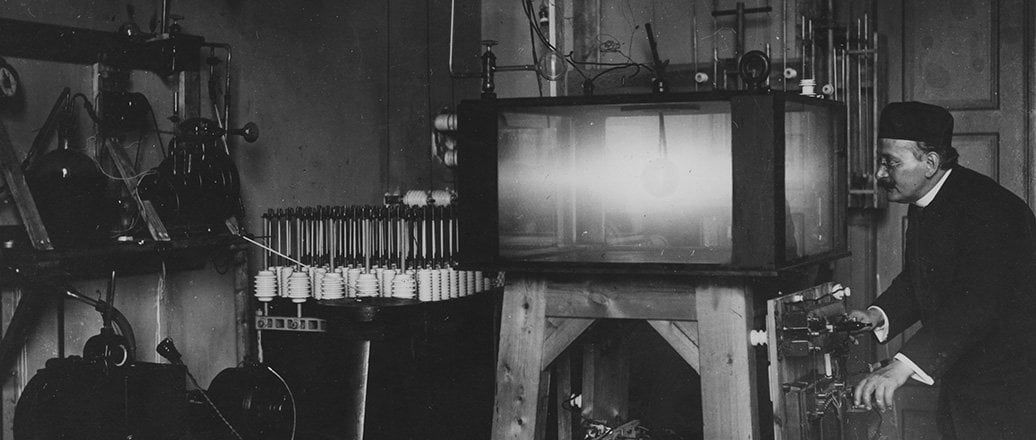At Hydros shareholders meeting in 1905, Kristian Birkeland was appointed as technical consultant for life with an annual salary of NOK 5,000 - the same amount he earned as professor at the university. His remuneration later increased dramatically, providing him with the opportunity to pursue his research projects more closely.
Birkeland believed there was a connection between the northern lights and activities on the sun’s surface. As early as 1896, he had substantiated his main theory – that electrically charged particles radiated at great speed from spots on the surface of the sun, were captured by the earth’s magnetic field and directed to the polar areas. When the particles encounter and slow in the earth’s atmosphere, gases in the atmosphere ignite and glow.
This theory was supported by practical experiments in his laboratory at the University of Christiania (now Oslo), and by extensive expeditions and studies in the northern polar regions.
The fundamental studies were published in ”The Norwegian Aurora Polaris Expedition.” Part one was completed in 1908 and the second volume in 1913.
From the arctic to the Tropics
Zodiacal light is a weak glow in the sky due to the reflection of dust particles in the equator area. This can be clearly seen in Africa against the dark night sky. As early as 1910, Birkeland had had already spent some time in Sudan and Egypt to study the phenomenon.
Birkeland was keen to learn more about zodiacal light and subsequently purchased property in Helouan, south of Cairo. He moved there in 1914. His conclusion, that the earth’s magnetic field affects both the path and the spread of electrically charged particles from the sun, and is therefore significant in the development of zodiacal light, attracted attention.
World War I disrupted his work. Colleagues were called to war duty and communication lines with his Norwegian associates were broken. Birkeland also suffered from increasing physical and mental health problems. His hearing was seriously impaired, probably due to chemistry experiments, and he was haunted by delusions. Amongst other things, he believed he was being followed by Englishmen trying to get hold of his electromagnetic cannon. His health improved somewhat when he was admitted to a sanatorium in 1916.
The last, long journey
In 1917, Birkeland began planning his return home to celebrate his 50th birthday in December. A trip through war-torn Europe seemed impossible, but the Danish consul in Cairo offered to travel with him via Asia, and Birkeland was easily persuaded.
When they arrived in Tokyo, Birkeland decided to stay for a while. He wanted to work with colleagues at the University of Tokyo.
During his stay, his psychological problems grew worse. On the morning of 15 June, 1917, he was found dead in his hotel bed. On the bedside table was a package of the sleeping drug Veronal and a revolver.
Meanwhile preparations for Birkeland’s 50th birthday celebration were well underway back home. There was also an initiative to nominate him for the Nobel Prize in physics. This effort was cancelled when news of his death reached Norway.
At his funeral in Tokyo, Professor Nagaoka gave an oration, which included the following words:“His ingenious spirit was apparent in his explanation of sun spots and the extraction of nitrogen from the air. This age-old problem was at last solved and given a practical application by means of the electric arc. All electrical engineers know Notodden as one of the largest power plants, where, with the help of giant turbines driven by hydroelectric power, three meters long, lightning-like arcs are generated to manufacture potassium nitrate. But far and above this valuable and wonderful invention, his name will be remembered for his studies of polar light.”
As soon as the war ended, Birkeland’s ashes were sent home to Norway and buried. A memorial service was held on September 22, 1919, at the University of Christiania. On his gravestone is written: “He bound nitrogen from the air with an electromagnetic arc. He studied the Northern Lights, solar radiation and the earth’s magnetic field.”
A statue of Professor Birkeland stands today outside the Hydro museum at Notodden, where one of the first factory buildings was constructed in 1904.There is also a bust of Birkeland at Hydro’s research center in Porsgrunn, in the Oslo fjord.
Updated: August 17, 2020











